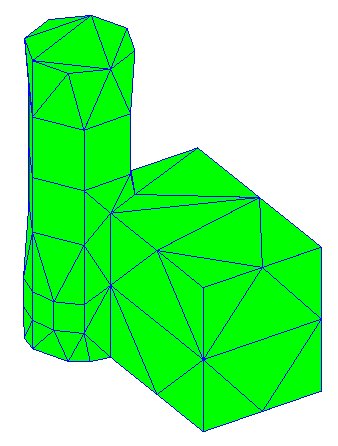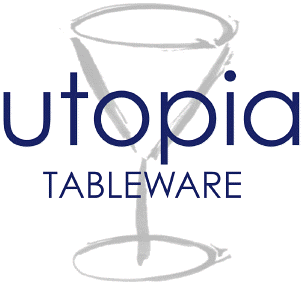|
|
LITR 5439
Literary & Historical Utopias
|
|
Jan Smith
The Space That Dreams Are Made Of
The
definition of Utopia as “no place” was a bit too intangible for me at first.
Much like Dorothy, from The Wizard of Oz,
when she says, “Toto, I get the feeling we are not in Kansas anymore”; I felt
myself grappling with this simplistic definition.
I understood Sir Thomas More’s concept
of Utopia as a “good place”. A society where systems work in harmony to the
betterment of all—That was easy. Yet the Greek interpretation of “no place”
continued to escape me. So I began to research and found some interesting
concepts for defining the “no place space” of Utopia.
After reading several pieces of
research, the pieces began to fall into place. Utopia starts off as a concept or
idea. The ideas then turn into a desire, and that desire becomes so strong that
it drives the characters into action. With this purpose in mind, they construct
a physical space based on that idea or desire. In this space the desires can
come to fruition. This is the point where
“no place” turn into a “good place”. The
concrete place called Utopia is now a physical representation of the original
idea. The physical space now serves the purpose of nurturing the desire and
keeping the ideals alive. For this post I looked to my fellow Utopian writers to
help explain how the concept of “no place” is represented in works of Utopian
Literature.
Desire and Purpose
Some
humans have a desire to create a better living space. This drive moves people
towards the creation of a utopian concept. Haylie Unger describes this in her
2011 Research Post when she says that Utopia is “a product of human desire”.
She gives several examples explaining how desires motivates: “Utopus
builds Utopia and establishes laws, a clear expression of a desire to create
(More 2.59-2.60); similarly, Gilman’s women of Herland conceive children purely
through desire, an act which allows their society to survive (12.50). According
to Naomi Jacobs in her Islandia: Plotting
Utopian Desire, “Utopian fiction is the ultimate fiction of desire. .
. a conscious attempt to awaken or
reawaken desire for a more perfect state of being” (1). That is to say, the
founder/originator of a Utopian society often creates the society with a desire
to better the state of humanity, improve some condition of living, provide for
the whole community all the basic needs of life, et cetera” (Unger 2011). In all
these instances, the creator has a burning desire to bring about a better way of
life. While some desires come from the will to create, other desires for Utopia
are the striving towards perfection. Regardless of the origin, the common thread
is that desire seems to be embedded somewhere deep inside the consciousness.
Desire in Dystopia
Yearning for a better life can turn into a purpose for living.
Purposes are why characters create
Utopias. And for every Utopia, there are different reasons for the people that
want them. In the case of a dystopia, the space represents a desire for
liberation from the former space and a yearning for a better life. James Seth
give a few suggestions from a dystopian perspective. To do so he uses both
fiction and real life to show how strongly a purpose can fuel the Utopian “no
space” definition: “Utopian founding narratives are often narratives of freedom
and liberation, which directly connects to themes in dystopian fiction, where
the protagonist is freed from oppressive forces. In Ayn Rand’s
Anthem, Prometheus and Gaea are
liberated from totalitarian rule and free to establish their own community after
settling in the house from the Unmentionable Times.
The Declaration of Independence
states that when ‘it becomes necessary for one people to dissolve the political
bands which have connected them with another’ that ‘a decent respect to the
opinions of mankind requires that they should declare the causes which impel
them to the separation’” (Seth 2011). In both instances there is a strong desire
to change their way of living. Once the change becomes real the Utopia follows.
Wanting More from What You Already Have
Keri
Welborn shows how some Utopian desires stem from a regard for a space that
already exists. In her 2004 midterm she discusses how Ecotopians , like the
communes from the 60’s, demonstrate a
desire to preserve the beauty in nature when she says: “Ecotopia
focuses on the “back to land” philosophy that many modern utopias have, such as
the hippie communes of the 1960’s. The
government [in Ecotopia] functions on
many levels, but mainly to protect, preserve, and revere the environment. The
communes of the 1960’s focused on these same principles.
Like Ecotopia, the 60’s
communes not only focused on the ecological aspects, but also on the community
aspects”. In both of these examples the
desire for the Utopia stems from the respect that the dreamer has for a space
that is already in existence. This is similar to the dystopian desire or
conception surrounding “no place”. But instead of breaking away and starting a
separate space, the Ecotopians have a desire to repair the land and live
harmoniously in it. She also compares the Ecotopian desire to that of Adam and
Eve in the Garden of Eden. “The natural condition that the Ecotopians seem to
want to return to is that of Eden, and the purpose of man, which in Genesis says
to tend to nature”( Welborn 2004). This comment makes me think how Ecotopians
have a deep spiritual bond with the earth and it almost draws them into a
relationship.
When
you commit to reading a piece of Utopian literature, you initially encounter a
space. What I mean by space is the physical representation, or the setting,
given by the author representing the “no place”. Before the space comes into
existence, it starts as a desire in the mind of a dreamer. As a lover of Utopian
literature, I enjoy conceptualizing the perfect world apart from my current
reality, shaping it with my own desires and love of nature.
Works
Cited
Callenbach, Ernest. Ecotopia. New
York: Bantam, 1975.
Gilman, Charlotte Perkins. Herland.
New York: Pantheon, 1979.
Jacobs, Naomi. "Islandia: Plotting Utopian Desires."
Utopian Studies 6.2 (1995): 75-89. Print.
Jefferson, Thomas. The Declaration of
Independence. Utopias Course Website.
http://coursesite.uhcl.edu/HSH/Whitec/texts/UtopTexts/foundingutopias.htm
More,
Thomas.
Utopia. 1516.
Rand,
Ayn. Anthem. New York: Signet, 1961.
Seth,
James. “B5: Founding and Finding Utopia.”
UHCL, June 2011. Web.
https://en.wikipedia.org/wiki/The_Wizard_of_Oz_(1939_film)
Unger, Haylie. “Desire: The Drive and
Destruction of Utopia.” UHCL. 2011. Web. 17 June
Welborn, Keri. “Utopias: Ecology and Story Development.” UHCL, June 2005. Web




